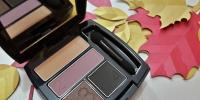Ivan (fireweed) tea: collection and drying at home
Ivan-tea, or narrow-leaved fireweed, has been used since ancient times as medicinal infusions, decoctions and simply teas. But, in order for the drink to turn out to be as healthy and tasty as possible, you need to know how to collect and dry Ivan tea correctly.
This can be done both in the usual grandmother's way, and using modern technologies - dryers. Flowers and leaves are collected from the plant as raw materials.
Where and when to collect Ivan tea
The recommended harvest time is from June to August (during the most abundant flowering). It is better if Ivan-tea grows in a sunny meadow near a reservoir. There, the plant contains a maximum of useful substances. Do not take plants from places close to roads. (For information on how to grow Ivan tea in the country, read in).
Note: only narrow-leaved fireweed is suitable for collection, and not its counterpart, forest fireweed. You can tell them apart by the height of the bush. Fireweed narrow-leaved reaches up to 2 m in height, when its counterpart grows no higher than 15-20 cm.
Assembly rules
You can collect Ivan tea:
- collecting separately leaves and inflorescences;
- cut off the entire plant, leaving the petiole about 20 cm above the ground.
Leaves should be plucked or trimmed with garden shears. When pruning, it is necessary to capture the part of the petiole on which it sits. For processing, the leaves should be of medium size (do not take the largest from the bottom of the plant), even, without dark or light spots. Cobwebs should not be present on the leaves.
Flowers should be taken fresh, not withered. You can also collect unopened inflorescences. The flowers should also be free of foreign inclusions and spots.
Take note: it is believed that the younger the flowers and leaves, the more useful properties they have.
Harvesting methods at home
After the leaves are collected, they must be dried. If there are no insects (aphids) on the leaves, then they do not need to be washed. If you still got aphids, then they must be soaked for 15 minutes in a container of water and filtered.
The withering procedure consists of several stages:

When the foliage is wilted, it must be allowed for further processing - fermentation.
Fermentation is the process of fermentation. Juice is released from the damaged leaf structure, in which the tea is fermented. The longer the process, the darker the tea will turn out. It is important not to miss the right moment and stop the process in time. After fermentation, the tea leaves are sent for drying.
The leaves must be laid one on one in a not too thick layer. Roll them into "sausages". The process is similar to rolling a rolling pin on a table. At this time, the entire structure of the leaf collapses and the juice begins to stand out, so the leaves may become darker in color.
The resulting bundles of foliage must be folded in layers into an enameled pan or a small basin. Cover the top with a damp towel. Leave in this state for 3-4 hours in a warm place, possibly next to a battery or stove.
The degree of the process can be determined by smell. Instead of a herb smell, a light fruity aroma should come out of the pot (this is a sign that the fermentation should be stopped).
There is another way to prepare Ivan tea. It's much easier and faster. After drying, the leaves are passed through a meat grinder. Then they are put into disposable bags and sent to the pan for fermentation. Further, everything is identical to the first method.
Drying methods and storage
The most popular drying method in city apartments is oven drying. To do this, the "sausages" are taken out of the pan and cut into small strips (or twisted leaves from the bags).
Lay out the tea in a thin layer on a baking sheet (it is better to cover it with parchment paper). Put in a cold oven, which is then heated to 90C.
Periodically (about every 10 minutes), the tea should be stirred, making sure that it does not dry out.
Readiness can be determined by the following signs:
- the color of the tea leaves has become dark (like tea from the store);
- the tea has dried up, but it still does not crumble in the hands.
As soon as these signs appear, you can pull out the baking sheet and put the tea away for storage.
Another way to dry tea is in a special electric dryer, it is also used for drying fruits, vegetables and berries. It sets a special mode and a certain time. The dryer is convenient in that it is not necessary to stand guard or stir near it.
Dried and cooled tea is sent for storage. The ideal container is a glass jar with a tight-fitting lid. In a jar, tea can be stored all year. Storage temperature - from 10-20C. It is necessary to store a container with tea for the winter in a dark place.




